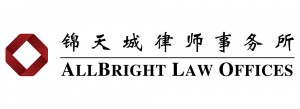In recent years, trade secrets violations have been shown up in the press time and again. The leaking of trade secrets at Neusoft by 20 of its employees, the sentencing to three years imprisonment of a former Haier executive who stole trade secrets and jumped ship, the sentencing to six months imprisonment of a former DJI employee for leaking source code, the leaking of secrets by a TCL CSOT employee, etc. Trade secrets often represent the core competitiveness of an enterprise, having substantial commercial value and often accompanied by a very high risk of infringement.

Partner
AllBright Law Offices
The term “trade secret” means technical or business information that is not known to the public, can confer economic benefits on the rights holder, has commercial value, is useful, and for which the rights holder takes measures to keep confidential.
Today, there are a variety of ways to infringe trade secrets. Employees of various rank often have access to different levels of trade secrets. If an enterprise is lax in the compliance management of its trade secrets, it is highly susceptible to the risk of its trade secrets being leaked.
Recent cases show that the leakage of trade secrets by employees who have access to trade secrets, and who then jump ship or establish their own business, is becoming a common phenomenon. In particular are those core employees who have access to, and are familiar with, an enterprise’s trade secrets, who will take the software code, design drawings, processes, design formulas or other such technical information, production and marketing strategies, marketing plans, supply information or other such business information with which they are familiar, as a means to boost their wages, benefits and bargaining power.
The Anti-Unfair Competition Law, as amended in 2019, adds the provision that, “where a natural person, legal person or organisation without legal personality, other than a business operator, commits any of the illegal acts set out in the preceding paragraph, he, she or it shall be deemed to have infringed the trade secrets”, and deliberately makes the point of listing enterprise employees and departing employees. That is because an enterprise’s trade secrets are created, used, managed and protected by employees.

Paralegal
AllBright Law Offices
Once an employee jumps ship or steals a thing in his/her care, it signifies that the enterprise’s doors are wide open. China has strengthened the protection of trade secrets by gradually improving legislation, regulating administrative law enforcement, strengthening judicial intervention, etc., and has created a favourable business environment.
To combat this theft, an enterprise should endeavour to establish a sound trade secrets compliance prevention and control system. It can improve its internal management systems by judiciously drawing upon the relevant provisions of the recently issued Provisions of the Supreme People’s Court on Several Issues Concerning the Application of the Law in the Trial of Civil Trade Secrets Infringement Cases, such as articles 6 and 12. The authors recommend that an enterprise take the following management measures to achieve its objective of confidentiality management:
(1) Establish a confidentiality system where non-disclosure agreements and employment contracts complement each other.
(2) Establish a system for the notification in writing of confidential business, and a routine training system
For example: (a) expressly specify employee confidentiality obligations in the employee handbook, company rules and regulations, and other such internal company documents, and bring such obligations to the attention of each employee; (b) provide trade secrets leakage prevention training to employees and retain evidence; (c) specify the confidentiality obligations of certain employees in specific positions by directly informing them in writing.
(3) Establish a system for the management of premises by division and classification
With respect to production and operating premises involving trade secrets, strictly limit the persons who may access them, and their access authority, and subject the premises to special management. Where conditions permit, avoid the over-concentration of trade secrets such that they are unilaterally controlled by a small number of employees, and store them within the control of the company.
(4) Establish an internal hierarchical management system
Mark different grades of trade secrets, and the media on which they are stored by grade, encrypting trade secrets, limit who can access them and their access authority, and subject personnel who have access to and use the trade secrets to security management, e.g., access that leaves traces, etc.
(5) Erect an enterprise trade secret firewall
Prohibit employees from surreptitiously accessing, reproducing, storing and destroying data and media relating to trade secrets.
(6) Establish an employee departure management system
If an employee leaves the enterprise, require him or her to immediately return, remove or destroy the trade secrets and their storage media that he or she had access to, or obtained from the enterprise, make a record of the same, and require the employee to continue to bear an obligation of confidentiality.
(7) Carry out employee list and duty management
Assess by stating in writing the title, duties and authority associated with the work of an employee, or the scope of the tasks assigned that the employee is required to complete, whether the employee will come into contact with trade secrets, or the media such trade secrets are stored on, in the course of his/her work, and appropriately manage the list of employees that could participate in, or come into contact with, the enterprise’s trade secrets. These measures can assist the enterprise and courts in providing support when determining whether an employee could access trade secrets.
The newly passed Bill to Amend the Criminal Law (11) (Draft) expands the scope of criminal protection of trade secrets, and changes the crime of infringement of trade secrets from a “consequential offence” to a “circumstantial offence”, further lowering the threshold for criminally combating trade secret infringement.
The amendments in the bill follow the ideas in amending the Anti-Unfair Competition Law, duly placing secrecy into the non-disclosure obligations (non-disclosure or non-compete agreements) commonly seen in an enterprise’s operations, which not only complements the above-mentioned civil provisions, but also makes breaching confidentiality obligations a double violation of the law.
This also provides more realistic room for determining the confidentiality (manageability) of trade secrets, which can be highlighted in an enterprise’s compliance training and guidance.
Ekin Zeng is a partner and Caroline Cheng is a paralegal at AllBright Law Offices

AllBright Law Offices
11/F and 12/F, Shanghai Tower
No. 501 Yincheng Middle Road
Pudong New Area
Shanghai 200120, China
Contact details:
Tel: +86 21 2051 1000
Fax: +86 21 2051 1999
Email:
ekinzeng@allbrightlaw.com
caroline.cheng@allbrightlaw.com





















